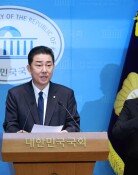Meeting among S. Korea, China, and Japan resumes in 4 years
Meeting among S. Korea, China, and Japan resumes in 4 years
Posted May. 27, 2024 07:59,
Updated May. 27, 2024 07:59
The trilateral summit between South Korean President Yoon Suk Yeol, Japanese Prime Minister Fumio Kishida, and Chinese Premier Li Chang will be held on Monday at the Cheong Wa Dae State Guesthouse. It has been four years and five months since the eighth meeting was held in Chengdu, China in December 2019. President Yoon held bilateral talks with visiting Chinese Premier Li and Japanese Prime Minister Kishida separately at the Yongsan Presidential Office Sunday afternoon to discuss cooperation between South Korea and China and South Korea and Japan, respectively. “This trilateral summit will be a turning point in fully restoring and normalizing the trilateral cooperation system,” the presidential office in Seoul said.
There are not many expectations that the trilateral summit will produce concrete results by going beyond the four-year gap. This is due to the drastic changes in the Northeast Asian situation, with South Korea and Japan’s relations with China effectively at the lowest point. The disconnect of South Korea and Japan’s relations with China, which began with the COVID-19 pandemic, has been exacerbated by a confluence of geopolitical events, including the escalation of the North Korean nuclear threat, the intensification of the U.S.-China strategic competition, and Russia's war of aggression. Correspondingly, the security of Northeast Asia has been jeopardized, and relations have been frayed.
Therefore, the significance of this trilateral meeting is that it has resumed after a long hiatus, which means that it has created a momentum for communication. It is for this reason that the three countries are trying to find common ground on long-term cooperation in issues such as climate change and disaster response while putting aside issues of dispute such as supply chain troubles in industries such as semiconductors, the North Korea-Russia arms trade, North Korea’s denuclearization, and tensions in the Taiwan Strait. Although customary, the attendance of China's non-powerful Premier Li, rather than President Xi Jinping, also makes it difficult to have high expectations at the meeting.
However, the meeting is significant in that it marks the start of 'buffer diplomacy' between the three countries amidst a harsh neo-Cold War confrontation. The resumption of the meeting follows a change in attitude by China, which has been lukewarm to South Korea and Japan's constant calls for cooperation. This is because China needs to reduce pressure from the U.S. through South Korea and Japan while improving relations with Washington to prevent conflict. Furthermore, South Korea and Japan need to communicate with China to avoid being caught in the crossfire of the U.S.-China hegemonic conflict.
The reality is that South Korea-China relations are inevitably linked to the U.S.-China ties. In the past, South Korea has been forced to align itself with the U.S. and Japan to some extent to keep China in check by strengthening the U.S.-ROK alliance against North Korea and the Seoul-Washington-Tokyo trilateral security cooperation, which resulted in a harsh diplomatic conflict with China. However, a ‘South Korea-U.S.-Japan vs. North Korea-China-Russia’ confrontation is something Seoul should avoid. Instead, South Korea should use this meeting to demonstrate its diplomatic prowess as a bridge country that can mitigate U.S.-China conflicts and create mechanisms for regional cooperation rather than a nation sandwiched between Washington and Beijing.



![‘건강 지킴이’ 당근, 효능 높이는 섭취법[정세연의 음식처방]](https://dimg.donga.com/c/138/175/90/1/wps/NEWS/IMAGE/2026/01/18/133181291.1.jpg)



